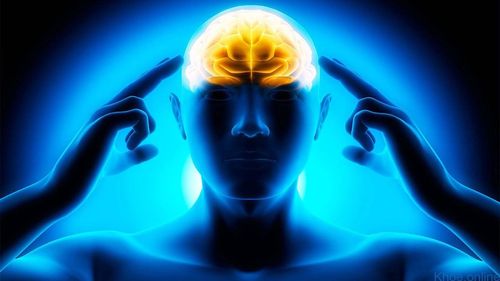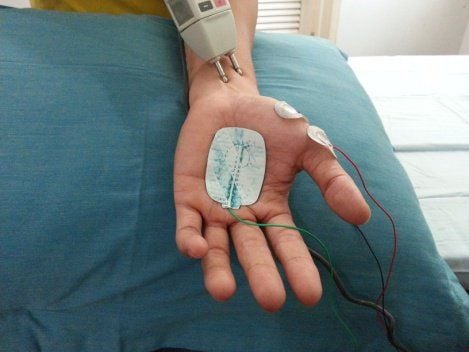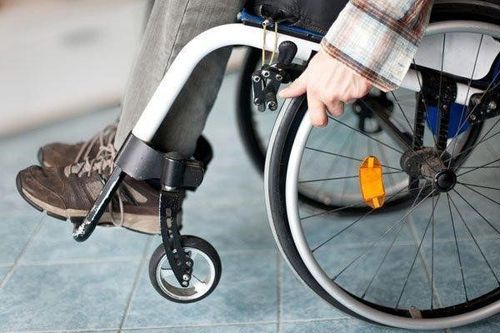This is an automatically translated article.
The article is consulted by Specialist Doctor I Tran Thi Thu Huong - Head of Rehabilitation Unit - Department of General Surgery - Vinmec Central Park International Hospital
Peripheral cranial nerve palsy is a condition in which hemifacial paralysis is accompanied by complete or partial loss of movement of the muscles of the half of the face, due to damage to the facial nerve. The disease can be prescribed medical treatment and treatment with physical therapy methods.
1. What is peripheral nerve palsy?
VII peripheral nerve palsy, also known as peripheral facial palsy, is a condition in which hemifacial paralysis is damaged with complete or partial loss of movement of the muscles of the half of the face, due to nerve damage. facial (central facial paralysis is damage to the brain). Peripheral cord palsy is a common disease of all ages, regardless of sex, and is not transmitted from person to person.
The cause of the disease is peripheral paralysis of the VII nerve, damage to the VII nerve from the temporal bone outward, also known as Bell's facial palsy, usually due to cold, or inflammation.
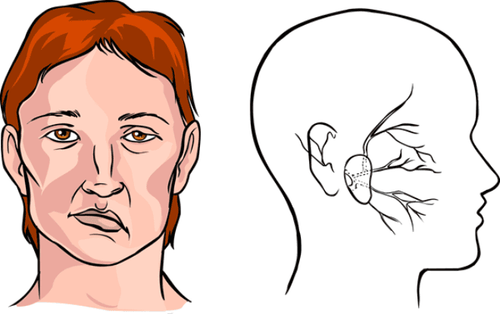
Liệt dây thần kinh VII ngoại biên có thể do lạnh hoặc viêm
2. How is peripheral nerve palsy diagnosed?
The diagnosis of peripheral nerve palsy is through taking the medical history and clinical symptoms.
The disease often has a sudden onset with hemiplegia after waking up, the patient feels numb on one side of the face, looks in the mirror and sees hemiplegia, or begins after a sudden change in weather. Charles bell sign: The patient does not close the eye on the paralyzed side. In a relaxed state: The patient's face is asymmetrical, pulled to the healthy side. Loss of forehead wrinkles and nasolabial folds, the paralyzed side's edge is lowered compared to the other side, food flows out of the mouth on the paralyzed side. There is no loss of sensation on the paralyzed side of the face. In order to accurately diagnose peripheral cranial nerve palsy, doctors need to examine the ears, nose, throat, nerves, magnetic resonance imaging and blood tests to rule out damage from central VII nerve palsy and other peripheral neuropathy. other diseases.
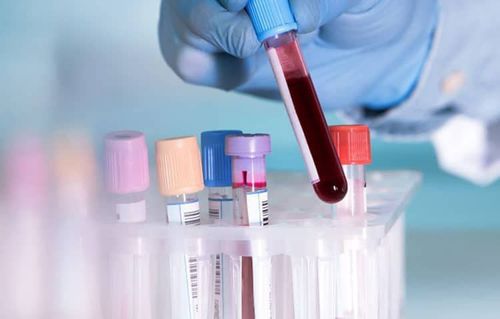
Xét nghiệm máu được thực hiện để chẩn đoán bệnh
3. How is peripheral nerve palsy treated?
First of all, medical treatment is indicated, patients with 7th nerve palsy will be used early corticosteroids, high doses (1mg prednisolone/kg). In addition, special anti-viral drugs can be used for cases of viral infection or pain behind the ear, sensory disturbances in the face.
In addition, to effectively treat peripheral nerve palsy, it is necessary to combine physical therapy or electrical stimulation along with facial muscle exercises to bring about a comprehensive treatment effect for the patient. Early examination and treatment will help patients recover faster, should be treated immediately after detecting the disease.
Patients with facial nerve paralysis can go to Vinmec International General Hospital for examination and treatment. We have a team of well-trained, experienced and qualified neurosurgeons. Especially, there is a system of modern equipment, meeting international standards; Professional service quality, high efficiency in diagnosis and treatment, minimizing complications
For detailed advice on facial paralysis as well as the medical examination and treatment process at Vinmec, please come directly to Vinmec. Contact Vinmec health system or register online HERE.





